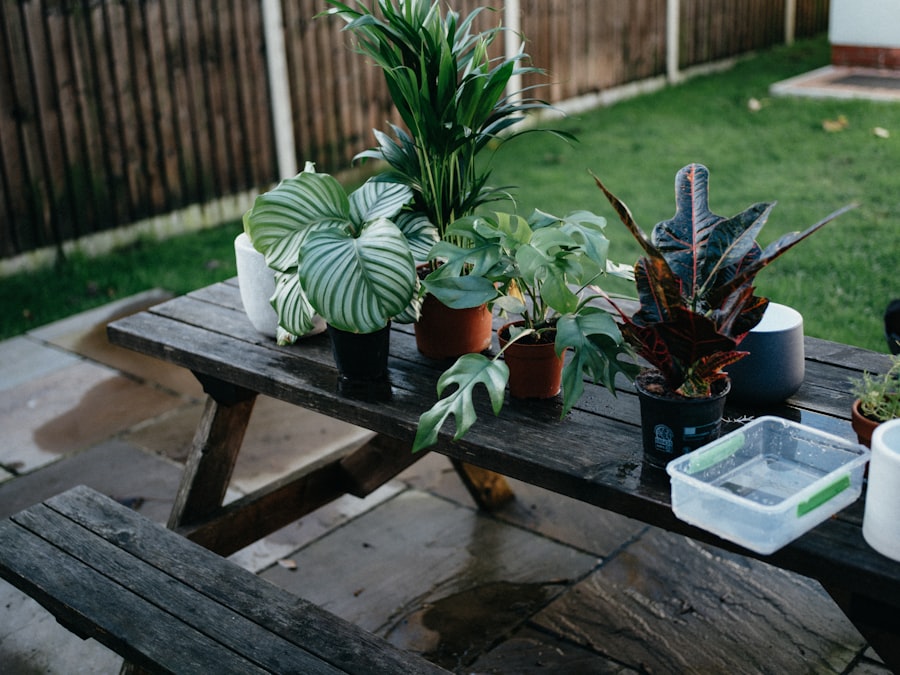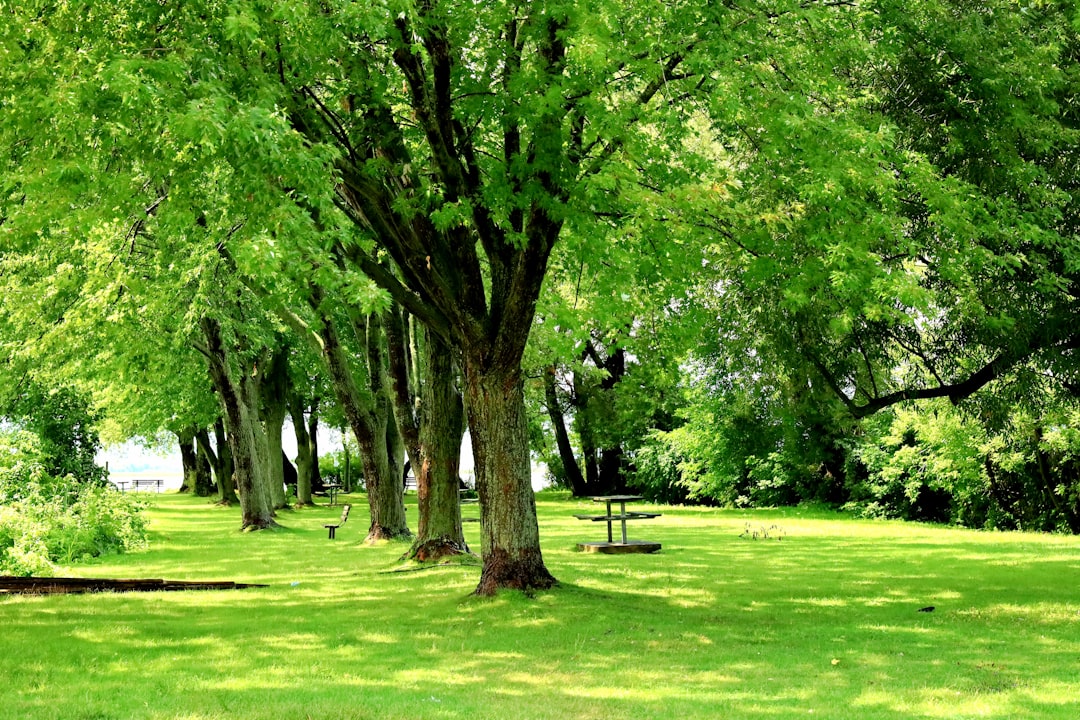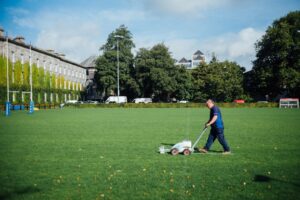Selecting the appropriate grass trimmer is a crucial step in maintaining a well-groomed lawn. The market offers a variety of options, including gas-powered, electric, and battery-operated models, each with its own set of advantages and disadvantages. Gas-powered trimmers are typically favored for their power and ability to handle thick, overgrown grass and weeds.
However, they can be heavier and noisier than their electric counterparts, and they require regular maintenance, including oil changes and fuel mixing. On the other hand, electric trimmers are lighter and quieter, making them suitable for residential use, especially in neighborhoods where noise restrictions may apply.
They come in corded and cordless varieties. Corded models provide unlimited runtime as long as they are plugged in, but they can be cumbersome due to the need to manage the power cord. Cordless electric trimmers offer the convenience of mobility without the hassle of cords, but their runtime is limited by battery life.
When choosing a trimmer, consider the size of your lawn, the type of vegetation you need to trim, and your personal preferences regarding weight and ease of use.
Key Takeaways
- Choose a grass trimmer with the right power source (electric, battery, or gas) and cutting width for your lawn size and terrain.
- Different trimming techniques include edge trimming, vertical trimming, and horizontal trimming, each serving a specific purpose in lawn maintenance.
- Regularly clean and inspect your grass trimmer, sharpen the blades, and lubricate moving parts to ensure optimal performance.
- Always wear protective gear, keep children and pets away, and be mindful of debris and obstacles while using a grass trimmer to prevent accidents.
- Use the appropriate trimming attachments and techniques to effectively trim around obstacles and edges for a polished look.
Understanding the Different Types of Trimming Techniques
Edging: Creating a Clean Line
One essential technique is edging, which involves creating a clean line between your lawn and garden beds or walkways. This not only enhances the aesthetic appeal but also helps prevent grass from encroaching into flower beds or pathways. To achieve a sharp edge, hold the trimmer vertically and move it along the edge in a smooth motion. This technique requires practice to master, but the results can be striking.
Scalping: A Technique to Approach with Caution
Another important technique is known as “scalping,” which involves cutting grass down to a very short height. While this can be beneficial for certain types of grass during specific seasons, it should be approached with caution. Scalping can stress the grass and lead to bare patches if done excessively or at the wrong time of year.
Striking a Balance: Trimming for Healthy Growth
A more balanced approach is to trim at a height that encourages healthy growth while still maintaining a neat appearance. This approach will help you achieve a well-manicured lawn that thrives throughout the growing season. By understanding when and how to apply these techniques, you can enjoy a beautiful and healthy lawn all year round.
Maintaining Your Grass Trimmer for Optimal Performance

Regular maintenance of your grass trimmer is essential for ensuring its longevity and optimal performance. For gas-powered models, this includes checking and replacing the air filter, spark plug, and fuel filter as needed. Keeping the cutting head clean and free from debris will also enhance efficiency.
Additionally, sharpening the blades or replacing the trimmer line regularly will ensure that your trimmer cuts cleanly rather than tearing at the grass, which can lead to disease. For electric and battery-operated trimmers, maintenance may involve checking the battery’s health and ensuring that all electrical connections are secure. Cleaning the cutting head and inspecting it for wear will help maintain performance.
It’s also important to store your trimmer properly during off-seasons; for gas models, this may involve draining fuel to prevent gumming up the carburetor, while electric models should be stored in a dry place to avoid moisture damage. By adhering to these maintenance practices, you can extend the life of your trimmer and ensure it operates at peak efficiency.
Safety Tips for Using a Grass Trimmer
| Safety Tips | Description |
|---|---|
| Wear protective gear | Always wear safety goggles, gloves, long pants, and closed-toe shoes when operating a grass trimmer. |
| Inspect the area | Before trimming, remove any debris, rocks, or obstacles from the area to avoid accidents. |
| Check the trimmer | Ensure the trimmer is in good working condition, with a sharp blade and secure parts. |
| Use both hands | Hold the trimmer with both hands and maintain a firm grip while operating it. |
| Be mindful of surroundings | Stay aware of your surroundings and avoid trimming near people, pets, or fragile objects. |
Safety should always be a priority when operating a grass trimmer. Before starting any trimming task, it’s essential to wear appropriate personal protective equipment (PPE). This includes safety goggles to protect your eyes from flying debris, gloves to shield your hands from cuts or blisters, and sturdy footwear to protect your feet from accidental contact with the cutting head.
Long pants are also advisable to prevent skin irritation from grass clippings or potential injuries. Additionally, it’s crucial to be aware of your surroundings while trimming. Look out for hidden obstacles such as rocks, sticks, or garden tools that could become projectiles when struck by the trimmer line.
Always read the manufacturer’s instructions before use to familiarize yourself with specific safety features and operational guidelines. By taking these precautions seriously, you can minimize risks and enjoy a safer trimming experience.
Trimming Around Obstacles and Edges
Trimming around obstacles such as trees, fences, and garden beds requires a different approach than open lawn areas. When navigating around trees, it’s important to adjust your technique to avoid damaging the bark or roots. A gentle touch is necessary; instead of using a high-speed setting that could cause injury to the tree, opt for a slower speed and maintain a safe distance from the trunk.
This not only protects the tree but also allows you to trim effectively without leaving unsightly tufts of grass. When dealing with fences or other structures, consider using an edging technique that creates a clean line without risking damage to the fence itself. Positioning the trimmer at an angle can help you achieve this while ensuring that you don’t accidentally hit any wooden posts or metal edges that could dull your cutting line or cause injury.
For garden beds, it’s beneficial to use a straight edge or guide to maintain uniformity in your trimming efforts. This attention to detail will enhance the overall look of your landscape while ensuring that all areas are properly maintained.
Achieving a Professional Finish with Your Grass Trimmer

To achieve a professional finish with your grass trimmer, attention to detail is paramount. Start by planning your trimming route; begin at one end of your lawn and work methodically towards the other end. This not only ensures that you cover all areas but also helps prevent missed spots or over-trimming in certain sections.
Maintaining a consistent height throughout your trimming will contribute significantly to a polished appearance. Another key aspect is the direction in which you trim. Trimming in different directions can create an uneven look; therefore, it’s advisable to establish a pattern that allows for uniformity across your lawn.
For instance, if you trim in straight lines along one side of your yard, continue this pattern throughout rather than switching directions frequently. Additionally, consider using a string trimmer attachment for edging; this can provide sharper lines along sidewalks and driveways, further enhancing that professional touch.
Dealing with Common Lawn Care Challenges Using a Grass Trimmer
Grass trimmers are invaluable tools for addressing common lawn care challenges such as overgrown weeds or uneven grass growth. When faced with thick patches of weeds, it’s often more effective to use a gas-powered trimmer due to its superior cutting power. Start by adjusting the cutting height appropriately; this will allow you to tackle taller weeds without damaging surrounding grass.
For particularly stubborn weeds, consider using a specialized cutting head designed for heavy-duty tasks. Another challenge many homeowners face is maintaining an even lawn height after mowing. Grass trimmers can help blend areas that may have been missed by the mower or where grass has grown taller due to shade or moisture differences.
By carefully trimming these areas at an appropriate height, you can create a more uniform appearance across your lawn while promoting healthy growth patterns. Regularly addressing these challenges with your trimmer will contribute significantly to an overall healthier lawn.
Enhancing the Overall Health and Appearance of Your Lawn with Proper Trimming Techniques
Proper trimming techniques not only improve the aesthetic appeal of your lawn but also play a vital role in its health. Regular trimming encourages new growth by removing dead or overgrown grass that can harbor pests or diseases. By maintaining an optimal height through consistent trimming practices, you allow sunlight to reach lower blades of grass, promoting photosynthesis and overall vigor.
Moreover, strategic trimming around flower beds and shrubs can enhance their growth by preventing competition for nutrients and water from surrounding grass. This practice ensures that plants receive adequate resources while maintaining an attractive landscape design. Additionally, incorporating seasonal trimming techniques—such as scalping in early spring for certain grass types—can stimulate growth and rejuvenate tired lawns after winter dormancy.
By understanding how proper trimming techniques contribute to both health and appearance, homeowners can cultivate lush lawns that are both beautiful and resilient throughout the seasons.
If you are interested in exploring the relationship between society and education as a key driver of development, you may want to check out the article The Relationship Between Society and Education: A Key Driver of Development. This article delves into how education plays a crucial role in shaping societies and fostering progress. Just like how a grass trimmer is essential for maintaining a well-kept lawn, education is vital for cultivating a thriving and prosperous society.
FAQs
What is a grass trimmer?
A grass trimmer, also known as a weed eater or string trimmer, is a handheld gardening tool used for cutting grass and weeds in areas that are difficult to reach with a lawnmower.
How does a grass trimmer work?
A grass trimmer uses a rapidly spinning nylon line to cut through grass and weeds. The line is extended from a spool and can be replaced when it wears out.
What are the different types of grass trimmers?
There are two main types of grass trimmers: gas-powered and electric (corded or cordless) trimmers. Gas-powered trimmers are more powerful and suitable for larger areas, while electric trimmers are lighter and quieter.
What are the benefits of using a grass trimmer?
Grass trimmers are versatile tools that can reach areas that lawnmowers cannot, such as around trees, fences, and garden borders. They are also useful for edging and maintaining a neat and tidy lawn.
How do I maintain a grass trimmer?
Regular maintenance of a grass trimmer includes cleaning the cutting head, replacing the nylon line, and checking for any damage or wear on the trimmer’s components. It is also important to keep the trimmer’s motor or engine well-maintained and lubricated.
























+ There are no comments
Add yours